Trumpeter swans are large white birds with black beaks. They are the heaviest bird species that is native to North America. In fact, they are one of the largest flying birds in the world, alongside the Andean condor, mute swan, and Dalmatian pelican.
Humans drove these swans to the brink of extinction, but careful management and relocation bolstered their numbers. Read on to learn about the Trumpeter Swan.
Description of the Trumpeter Swan
As far as swans go, Trumpeters are quite large. From head to tail, they are about 5 ft. long, and their wingspan is a whopping 7 ft. across. These massive birds also weigh up to 30 lbs. at their heaviest.
This swan’s plumage, or feathers, are white over their entire bodies. Its black bill is the easiest way to tell the difference between this species and the mute swan. The skin between their eyes and their bill is also black.
Interesting Facts About the Trumpeter Swan
These imposing birds truly are a unique species. They have many different behaviors and traits that make them stand out, learn more about them below.
- The Downsides of Size – Being so large is definitely a plus, but it is also a burden. Because they are so heavy, it takes a lot of effort for this species to get off the ground. In fact, they cannot take off from the ground, they must fly off of water! To get airborne, Trumpeter Swans need a clear football field of space to run along the surface and flap.
- The Trumpeter Swan and the Beaver – No, this isn’t the name of a lighthearted fairy tale. Trumpeter swans, along with many other swan species, rely indirectly upon American beavers. The beaver changes its entire environment, creating lakes, ponds, and wetlands. These new habitats are important for the survival of many other animals, including Trumpeter Swans!
- Strange Incubation – Most species of birds nestle their eggs gently between the feathers of their breast to incubate them. Trumpeter swans stand on their eggs instead! Ok, they don’t exactly stand on them, but they do place their feet over the top of their eggs while laying on them to incubate them.
- The Downfall in the 1800’s – The primary reason for this species’ population decline in the past is similar to that of many other species, humans. During this time, hunting went unregulated and hundreds of thousands of birds died. Not only did people hunt them for their meat, but they also used their feathers for fancy hats.
Habitat of the Trumpeter Swan
These swans live in similar habitats year-round, regardless of migration patterns or breeding grounds. They prefer ecosystems with a water source and plenty of plants or shrubs to hide in. They live in lakes, ponds, marshes, wetlands, tundras, and estuaries.
Trumpeter habitats must also have large water bodies so that they have plenty of space for a “runway” when they take to the skies. During the breeding season, Trumpeter Swans prefer nesting in areas with beaver or muskrat dens, as they like to build their nests on top of them.
Distribution of the Trumpeter Swan
While their populations are stable, this species’ distribution is quite patchy. Unlike most other waterfowl in North America, which have extensively wide distribution, these swans live and breed in just a few regions.
There are several small pockets of populations in the northern United States, and more extensive ranges in northwestern Canada and Alaska.
Diet of the Trumpeter Swan
Adult swans are primarily herbivores, though young swans, known as “cygnets,” eat more invertebrates. They eat a variety of leaves, shoots, stems, roots, tubers, and grasses. Some of their favorite species are pondweed, duck potato, horsetail, and sedge.
Cygnets eat insect larvae, insects, worms, small fish, and more. They do not dive, but dabble instead with their heads underwater and their feet in the air.
Trumpeter Swan and Human Interaction
In the past, many different human impacts resulted in the sharp decline of Trumpeter numbers. Hunting was obviously a direct impact, but these birds are also sensitive to habitat destruction, pollution, and even lead poisoning.
These threats have not disappeared, and only though careful regulation has this species bounced back. The IUCN lists Trumpeter Swans as Least Concern.
Domestication
Humans have not domesticated this species in any way.
Does the Trumpeter Swan Make a Good Pet
No, Trumpeter Swans do not make good pets. In fact, U.S. Fish & Wildlife closely regulates these birds, and there are hefty fines for harming or capturing them without the proper permits.
Trumpeter Swan Care
In a zoological setting, these swans need quite a large amount of space. Their enclosures should have a large water body, plenty of aquatic vegetation, and a variety of shrubbery and plants for them to browse on.
Zookeepers also feed them a variety of vegetables and pelleted waterfowl feed to ensure they receive all the proper nutrients. Zoo populations are frequently part of captive breeding programs designed to release their offspring into the wild.
Behavior of the Trumpeter Swan
These birds are most active during the day, and usually spend most of their time searching for food or grooming themselves. They are social animals, and most birds live in pairs or small groups called “flocks.” Flocks larger than two birds are often the offspring from the previous year.
Pairs of swans are monogamous, and remain together for life. During migration, this species often congregates with the Canada Goose, Tundra Swan, and other waterfowl.
Reproduction of the Trumpeter Swan
These swans like to build their nests on top of beaver dams, muskrat dens, small islands, and even docks. Both parents help build the nest, using a variety of grasses, reeds, and aquatic vegetation. Large birds make large nests, and this species’ nest is sometimes 11 ft. across!
The female lays between 4 and 6 eggs, which she incubates for around a month. The cygnets do not learn how to fly until they are well over 3 or 4 months old, and usually stay with their parents for a full year.

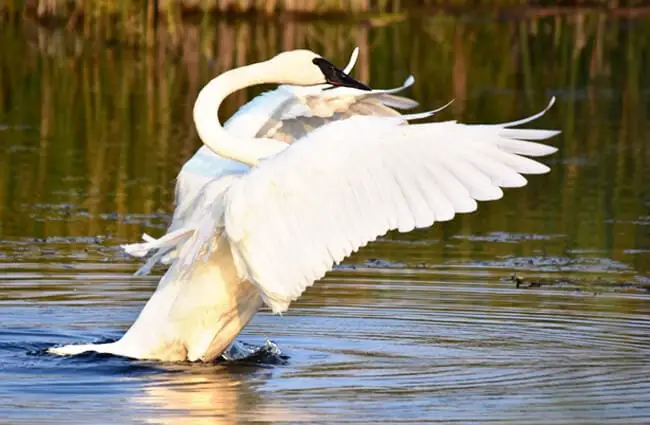
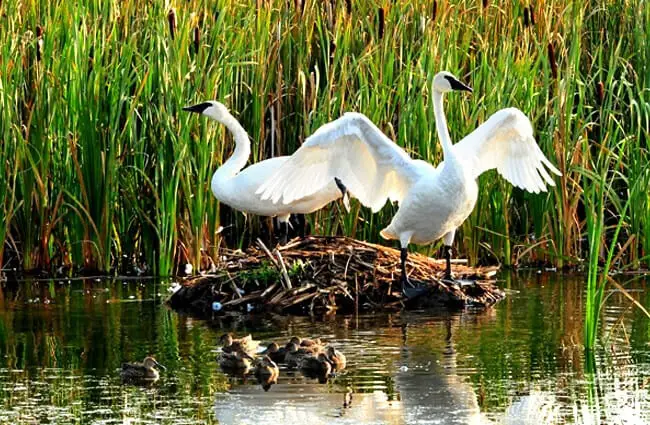
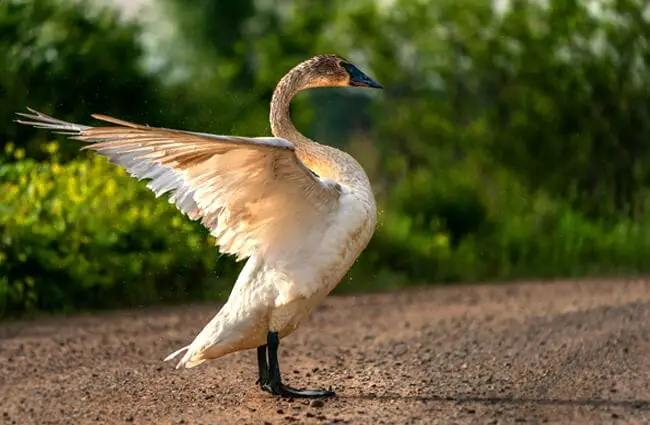

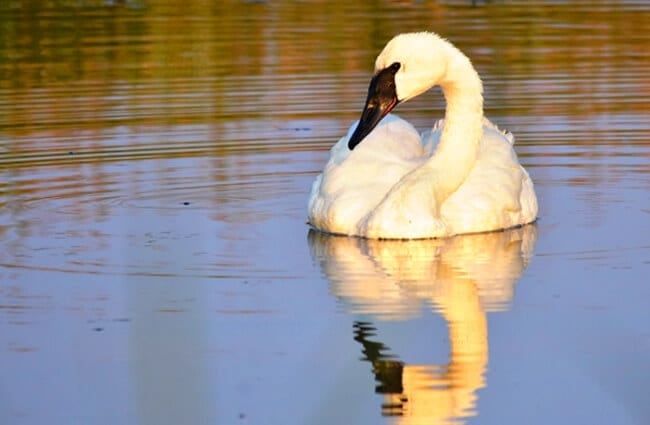


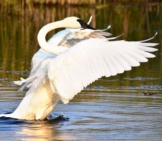

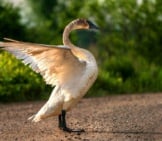
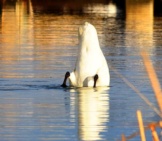

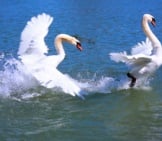

![Red Angus Closeup of a beautiful Red Angus cowPhoto by: U.S. Department of Agriculture [pubic domain]https://creativecommons.org/licenses/by/2.0/](https://animals.net/wp-content/uploads/2020/03/Red-Angus-4-238x178.jpg)












![Red Angus Closeup of a beautiful Red Angus cowPhoto by: U.S. Department of Agriculture [pubic domain]https://creativecommons.org/licenses/by/2.0/](https://animals.net/wp-content/uploads/2020/03/Red-Angus-4-100x75.jpg)

